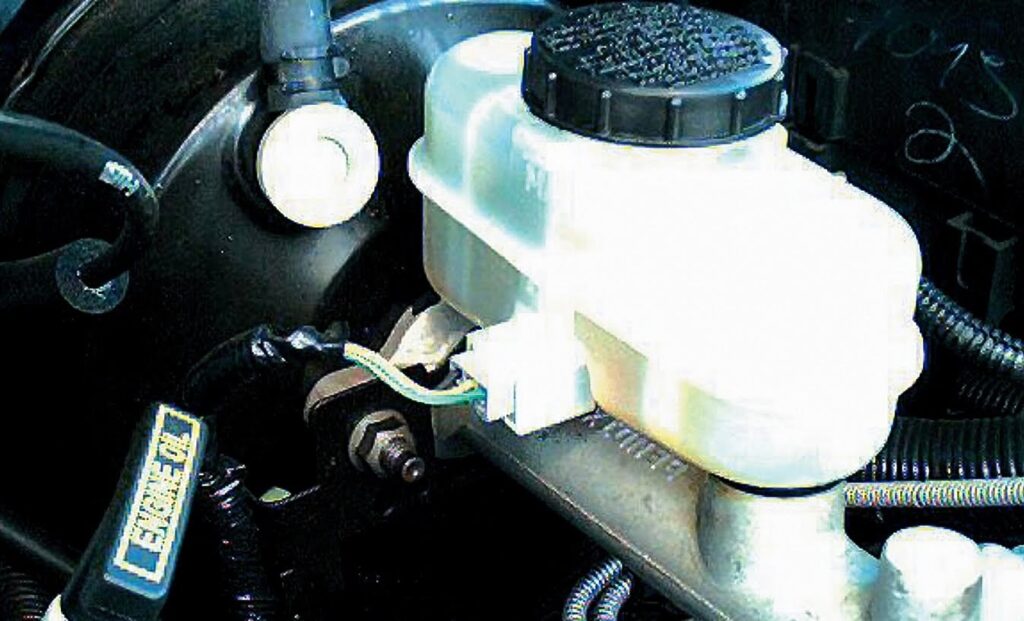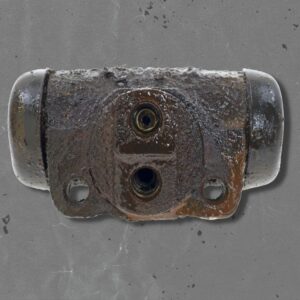Your vehicle’s brake master cylinder is one of the most important parts of its braking system. They usually last from around 70,000 to 100,000 miles, but they can last the lifespan of your vehicle. However, they are still part of a vehicle’s maintenance checklist and must be checked regularly.
A brake master cylinder is essentially just a cylinder with pistons that push brake fluid from reservoirs, generating hydraulic pressure and activating the braking system.
The master cylinder’s simple design is the reason why it’s exceptionally durable. However, brake master cylinders can develop leaks, which can lead to brake failure if not fixed immediately.

A visual inspection of the brake master cylinder is probably not enough since it can have internal leaks between piston chambers that might not be readily apparent. A leak can cause the brake pedal to feel spongy or sink. Sometimes, a brake warning light or check engine light can also warn you that there’s something wrong with your brake master cylinder.
It’s a good idea to check your brake master cylinder before going on a road trip to make sure it is working well and has no leaks. But do you know how to test a master brake cylinder? Wondering how to test if your brake master cylinder is bad? Read on for some tips.
How to Test a Brake Master Cylinder
Accessing the Brake Master Cylinder

Conducting a Visual Check

- If the brake master cylinder has obvious signs that brake fluid is dripping from its seals, then that’s a clear indication that there’s something wrong. If you’re having to add fluid regularly but can’t see where it’s going, it’s possible that it may be migrating into the brake booster, which means the booster will need to be replaced along with the master cylinder.
- Brake master cylinders should have no leaks other than the slight seepage you see in the photo, and not all master cylinders will have this seepage.
Where to Look For Leaks
- The brake master cylinder sits underneath the brake fluid reservoir, and leaks usually occur where the reservoir connects to the master cylinder.
- Leaks can also occur where the master cylinder connects to the brake booster.

Checking for Corroded Paint Near the Brake Master Cylinder
- Brake fluid is corrosive to some vehicle paint, but not all.. If fluid has leaked out of the brake master cylinder and spilled onto nearby components like the brake booster, then it will corrode your paint job. Any sign of a brake fluid leak is a sign that there’s a major problem.
Pressing the Pedal and Checking Its Position
- Press on the brake pedal until it stops. The pedal should maintain a steady position as you press on it for a full minute.
- If the pedal sinks, there could be an external or internal leak along the braking system. The most common master cylinder failure is when you feel a good firm pedal and then the pedal sinks from under your foot and you have to release it and reapply it to get a full pedal, and then it sinks again. That’s a failed master cylinder.
Checking the Fluid Tank
- If the brake pedal sinks during the stable position test and brake pressure is checked, then it could mean the master cylinder has an internal leak.
- You can open the brake fluid tank cap and observe the brake fluid level. There should be a noticeable change in the fluid level when you press on the brake pedal.
- If the brake fluid level rises when depressing the pedal, it might mean that there’s an internal leak in the master cylinder.
Pressing Brakes With Open Brake Bleeder Screws
- When the brake bleeder screws are loosened on the vehicle’s brake caliper, pressing on the pedals should cause brake fluid to spray out of the opening.
- No brake fluid coming out could indicate that the brake master cylinder can’t send fluid to the brake caliper. One of the pistons that send fluid to the brake caliper could be faulty.
Ensure Bleeder Screws Can Be Opened
- The brake calipers can encounter a lot of dirt and moisture. Hence, they can rust and seize. If they can’t be removed, then you won’t be able to remove excess air from your braking system, which will cause the brakes to feel spongy.
- If the bleeder screws are rusted and can’t be removed, you might need to replace the brake caliper.
Checking If Fluid Is Present Inside Brake Hoses
- Brake master cylinders typically have two brake hoses. One hose leads to the front brakes, while the other hose leads to the rear brakes.
- When loosening the bolts that hold the brake hoses to the master cylinder, both hoses should leak brake fluid. If there isn’t any fluid that comes out of the hose, then the brake master cylinder might be either clogged or faulty.
Drivers should always be aware of their vehicle’s brakes and their performance. If your vehicle feels weird, then you can use the tips mentioned above when it comes to testing the brake master cylinder.
Knowing how to test a master brake cylinder is crucial for ensuring the safety and functionality of your vehicle’s braking system. Make sure to thoroughly test your brakes before driving your vehicle, as your brakes are the only thing that stands between you and hitting obstacles head-on.
Get a Replacement Brake Master Cylinder Today
Avoid driving your vehicle until you can replace your faulty brake master cylinder. Damaged brake master cylinders can reduce braking efficiency, making your brakes unpredictable. In the worst-case scenario, they can even lead to complete brake failure, putting you at greater risk of getting into an accident. For your own safety, you should replace your brake master cylinder as soon as possible. Luckily, getting a replacement cylinder is fast and easy with CarParts.com.
CarParts.com offers a wide selection of brake master cylinders that are sourced from only the most trusted manufacturers in the industry, so you can rest assured you’re only getting the best. We want our customers to shop without worry, which is why we offer a 60-day return policy. If you aren’t completely satisfied with your new brake master cylinder, you can return it within 60 days of purchase, and we’ll give you your money back.
Don’t wait until your brake master cylinder negatively affects your brakes before replacing it. Check out our catalog of high-quality brake master cylinders at CarParts.com and order one for your vehicle today!
Any information provided on this Website is for informational purposes only and is not intended to replace consultation with a professional mechanic. The accuracy and timeliness of the information may change from the time of publication.









